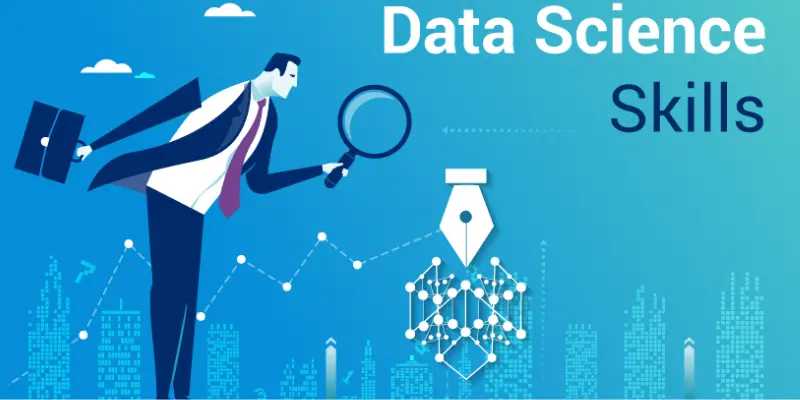
In the fast-evolving world of data science, having the right tools can make all the difference. Your Integrated Development Environment (IDE) is essential to your performance and productivity, whether you're cleaning data, creating predictive models, or visualizing intricate datasets. Choosing the right IDE can streamline your workflow, reduce errors, and help you focus more on insights and less on syntax. This blog explores how the right IDE can elevate your data science skills, what features to look for, and the most popular IDEs used in the industry today.
Why the Right IDE Matters in Data Science
Unlike general software development, data science involves a unique set of tasks—data cleaning, visualization, statistical analysis, and model building. The right IDE supports these tasks with features tailored to data scientists. A powerful IDE enhances coding efficiency, supports multiple languages, offers visualization capabilities, and integrates with essential libraries like Pandas, NumPy, Scikit-learn, and TensorFlow.
A beginner using basic text editors might face productivity bottlenecks, while experienced professionals often prefer IDEs with advanced debugging, version control, and real-time collaboration tools. Mastering these environments becomes much easier with formal training, such as what is offered in the Data Science Course in Tirunelveli.
Features to Look for in a Data Science IDE
When choosing an IDE, there are key features to consider:
-
Support for multiple languages: Python is the most used language in data science, but R and Julia are also popular. IDEs like Jupyter, VS Code, and RStudio offer multi-language support.
Popular IDEs Used by Data Scientists
Jupyter Notebook
One of the most popular choices for data scientists, Jupyter Notebook supports live code, markdown documentation, and visualizations all in one place. It's great for exploratory analysis, quick prototyping, and educational purposes.
Jupyter also supports Python, R, and Julia, making it flexible for multi-language projects. You’ll learn how to maximize Jupyter’s potential in any Data Science Course in Kanchipuram, where it’s frequently used in lab sessions.
Visual Studio Code (VS Code)
VS Code is a powerful, lightweight IDE with robust extension support. It allows seamless integration with Python, Jupyter Notebooks, Git, and Docker. It’s ideal for data scientists who need both exploratory features and traditional coding capabilities.
VS Code also supports remote development, which is excellent for cloud-based data science projects.
PyCharm
Developed by JetBrains, PyCharm is a full-featured Python IDE perfect for larger data science projects. It has sophisticated capabilities including virtual environment management, debugging tools, and code analysis, and integrations with major data science libraries.
It’s a favorite among professionals who build data pipelines or machine learning models in a structured software engineering environment.
RStudio
If your work leans heavily on statistical computing and visualization using R, RStudio is a top-tier choice. It’s tailored for data science with R, supporting rich text editing, visualizations, and markdown reporting.
RStudio also integrates well with version control systems and supports Shiny app development, allowing for interactive dashboards and reports. Learn how to use RStudio for analytics in the Data Science Courses in Dindigul.
How the Right IDE Improves Productivity
The ideal IDE reduces the cognitive load on the developer by automating repetitive tasks, offering real-time feedback, and providing a smooth workflow. Features like inline documentation, variable explorers, and one-click visualizations save valuable time.
Moreover, integration with cloud services, database connections, and APIs streamlines the process of building end-to-end data science solutions.
Learning to Use IDEs Effectively
Just installing an IDE isn’t enough—you need to know how to use it efficiently. That includes setting up workspaces, customizing shortcuts, managing packages, and using extensions wisely.
This is where structured learning environments help. In the Data Science Course in Jaipur, you’ll get hands-on sessions focused on IDE usage, giving you real-world experience on tasks like data cleaning, visualization, and machine learning model implementation within the IDE.
Real-World Applications and Projects
Expert data scientists utilize IDEs to solve practical issues including creating recommendation systems, identifying fraud, forecasting customer attrition, and improving marketing tactics. IDEs support these projects through robust tools for data handling, visualization, and deployment.
Your choice of IDE can significantly influence your effectiveness as a data scientist. From writing cleaner code to visualizing data and building powerful models, the right IDE provides an environment that supports every stage of the data science workflow.
With the right IDE in your toolkit, you’ll be better equipped to solve data-driven problems, build smarter solutions, and stand out in a competitive job market.
Also Check: Why is Data Visualization Important in Analytics?